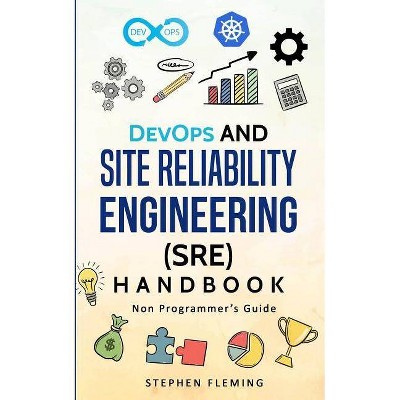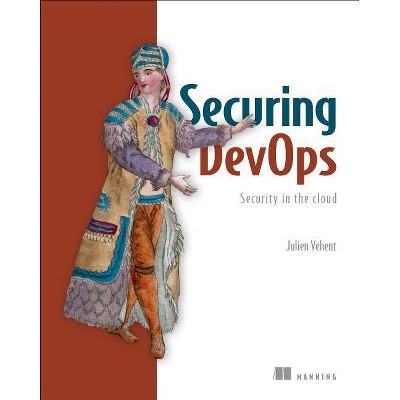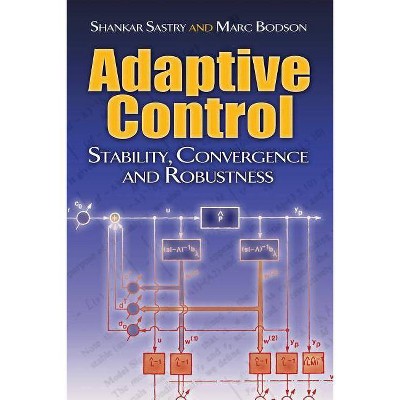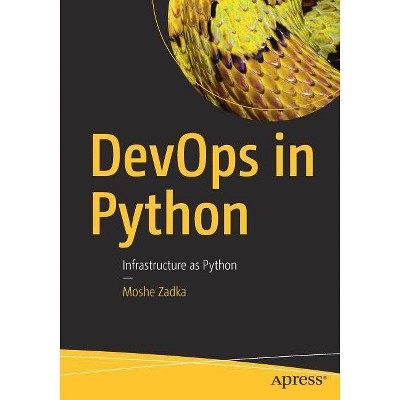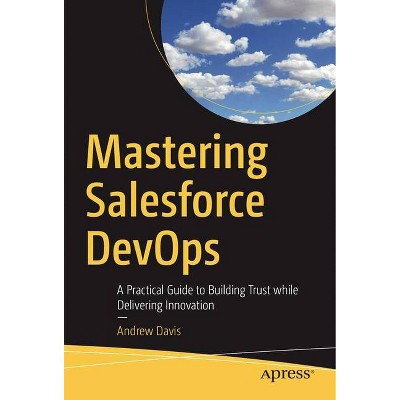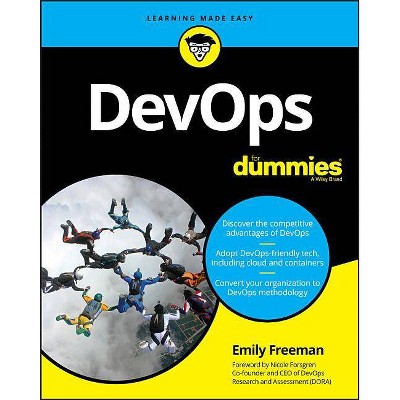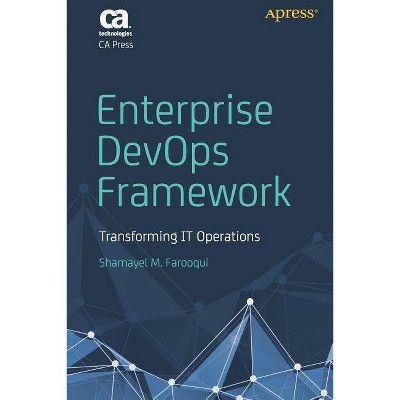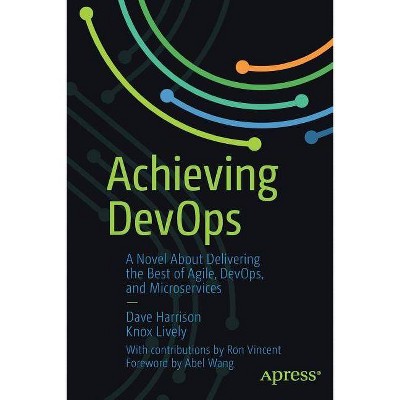Engineering Devops - by Marc Hornbeek (Paperback)
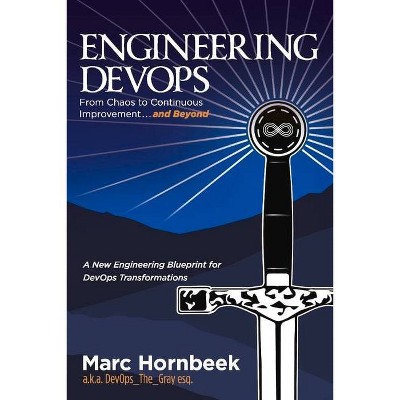
Similar Products
Products of same category from the store
AllProduct info
<p/><br></br><p><b> About the Book </b></p></br></br>This book is an engineering reference manual that explains How to do DevOps?. It is targeted to people and organizations that are doing DevOps but not satisfied with the results that they are getting. There are plenty of books that describe different aspects of DevOps and customer user stories, but up until now there has not been a book that frames DevOps as an engineering problem with a step-by-step engineering solution and a clear list of recommended engineering practices to guide implementors. The step-by-step engineering prescriptions can be followed by leaders and practitioners to understand, assess, define, implement, operationalize, and evolve DevOps for their organization. The book provides a unique collection of engineering practices and solutions for DevOps. By confining the scope of the content of the book to the level of engineering practices, the content is applicable to the widest possible range of implementations. This book was born out of the author's desire to help others do DevOps, combined with a burning personal frustration. The frustration comes from hearing leaders and practitioners say, We think we are doing DevOps, but we are not getting the business results we had expected. Engineering DevOps describes a strategic approach, applies engineering implementation discipline, and focuses operational expertise to define and accomplish specific goals for each leg of an organization's unique DevOps journey. This book guides the reader through a journey from defining an engineering strategy for DevOps to implementing The Three Ways of DevOps maturity using engineering practices: The First Way (called Continuous Flow) to The Second Way (called Continuous Feedback) and finally The Third Way (called Continuous Improvement). This book is intended to be a guide that will continue to be relevant over time as your specific DevOps and DevOps more generally evolves.<p/><br></br><p><b> Book Synopsis </b></p></br></br>This book is organized as an engineering reference guide for DevOps, presented in five parts as follows: Part I: What Is Engineering DevOps and Why Is It Important? is organized into three chapters. Chapter 1, What is Engineering DevOps?, explains engineering concepts and terms used in this book that have proven to work with many clients I have encountered during my consulting experiences. My depiction of a DevOps Engineering Blueprint is presented for as a useful, practical big-picture reference for discussing engineering the major parts of DevOps. Chapter 2, Nine Pillars of DevOps, describes a classification of DevOps practices that I have found to be useful characterization of DevOps engineering practices that can be readily applied when engineering DevOps implementations. Chapter 3, Why Is Engineering DevOps Important?, explains the benefits of taking an engineering approach to engineering DevOps. Part II: Engineering People, Processes and Technologies for DevOps provides a comprehensive explanation of recommended engineering practices for the higher levels of the DevOps Engineering Blueprint. DevOps transformations are not normally understood or applied using strict engineering principles. Engineering practices are presented in nine chapters as follows: How Should DevOps Be Engineered? includes a discussion of DevOps Engineering Maturity Levels for each of the Three Dimensions (People, Process, and Technology), Twenty-Seven DevOps Engineering Critical Success Factors, and Lean DevOps Value-Stream Pipeline Engineering. I describe recommended engineering practices for the top layers of the DevOps Engineering Blueprint in the next chapters, which include Value-Stream Management (VSM), Application Release Automation (ARA), Version Management, Continuous Security (a.k.a. DevSecOps), Service Catalog, Governance, Site Reliability Engineering (SRE), Disaster Mitigation, and Recovery. Part III: Engineering Applications, Pipelines, and Infrastructures Engineered for DevOps provides a comprehensive explanation of recommended engineering practices for the lower levels of the DevOps Engineering Blueprint, presented in six chapters as follows: DevOps Applications Engineering, CI/CD Pipelines Engineering, Elastic Infrastructure Engineering, Continuous Test Engineering, Continuous Monitoring Engineering, and Continuous Delivery and Deployment Engineering.Part IV: DevOps Seven-Step Transformation Engineering Blueprint provides a description and tools for my approach to realize and evolve DevOps. The seven steps are Visioning, Alignment, Assessment, Solution Engineering, Realization, Operationalize, and Expansion. By using these tools, DevOps leaders and practitioners can create, implement, operate, and expand their DevOps across the organization. The chapter goes further to explain how to evolve DevOps from a successful First Way DevOps (Continuous Flow) towards realizing more advanced Second Way (Continuous Feedback) and Third Way (Continuous Improvement) DevOps implementations. This part includes a discussion of Beyond Continuous Improvement--a look at emerging technologies that are shaping DevOps in the future and how you can prepare your DevOps and yourself for the future. This part includes a discussion of how to set up an effective DevOps engineering training program that supports continuous learning of DevOps engineering skills needed to maintain and enhance DevOps.Part V: Appendices, Continuous Learning, and References includes materials and sources that I have found most useful for engineering DevOps.<p/><br></br><p><b> About the Author </b></p></br></br>A well-known award-winning IEEE engineer and seasoned DevOps consultant, adviser, educator, mentor and author. Marc has performed assessments for over 70 organizations resulting in successful DevOps implementations and major improvements for those organizations. Marc is the author of the book Engineering DevOps, the Continuous Delivery Architect certificate course and DevOps Test Engineering certificate course for DevOpsInstitute.com, and a blogger on DevOps.com. Specialist / expert in DevOps assessments for organizations that desire a practical road-map to guide their DevOps transformation. Skilled with DevOps Leadership, collaborative culture, Design for DevOps, Continuous Integration (CI), Continuous Testing (CT), Continuous Delivery and Deployment (CD), Lab-as-a-Service (LaaS), Continuous Monitoring (CM), and Continuous Security. Awarded IEEE Outstanding Engineer, 2016, Western USA. Senior IEEE member, 44 years. Many publications, industry events speaker, eBooks, blogs, webinars, white papers, pitch decks, patents. Credentials include Executive MBA - Pepperdine U, California, B.Sc. Engineering - Queen's U., Canada, and certifications from the DevOps Institute.
Price History
Price Archive shows prices from various stores, lets you see history and find the cheapest. There is no actual sale on the website. For all support, inquiry and suggestion messages communication@pricearchive.us
